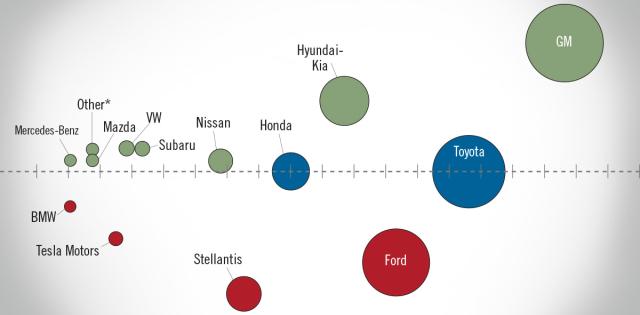Over the last decade, we’ve seen a revolution in customer expectations in the automotive retail industry. Technology has made an avalanche of information available to everyone instantaneously. Today’s consumers routinely enjoy fully integrated, real- time experiences in so many aspects of their lives, and they expect the same when buying or servicing their vehicles.
This “integration revolution”—which started with Amazon and other e-retail platforms—is at our doorstep, and it will provide dealers with massive opportunities to greatly enhance their customers’ experience. The key to this future is the seamless flow of data.
But in order for auto retailers to truly leverage data for the benefit of their customers, the auto industry must find a way to securely and efficiently integrate data flows across all channels of the automotive ecosystem—dealers, OEMs, finance companies, DMVs, vendors and the vehicle itself.
And right now we’re falling far short. A look under the hood of the auto industry reveals that the current way we integrate, share and use customer data isn’t clear, fair, efficient or even rational in many cases. As a result, instead of building new opportunities for ourselves, we’re chasing many away.
Take, for example, the way in which OEMs and their dealers share data. Some OEMs view this as a one-way street where data should flow to them in a single direction instead of in both directions on a shared basis. Some OEMs even require dealers to share customer data with third parties without appropriate legal or practical protections.
Not only is that unfair, it’s irrational, given that it often results in consumers receiving conflicting marketing and service messages from dealers, OEMs and third parties. That’s a far cry from the predictive marketing that other industries are able to pull off regularly.
The good news is that a growing number of OEMs are starting to get it. For example, one OEM—at NADA’s urging—conducted a review of its data integrations and found, among other things, that it had more than a dozen different dealer data agreements just under its own roof.
To its credit, this OEM quickly took the opportunity to improve efficiencies and avoid duplication, and is now taking action to establish a dealer data governance strategy that controls third-party access and creates clear, rational and fair access rules.
Other forward-thinking OEMs are following suit and acknowledging that the proper management of today’s rich and complex universe of data requires significant coordination. These OEMs see that an efficient, secure and compliant data integration plan isn’t just possible; it’s vital to brand value in the eyes of today’s consumers.
Of course, it’s not all good news. That’s because when it comes to data integration with third-party dealership service providers, we’re actually moving backwards.
Technology vendors can provide tremendous value for dealers, but some vendors have abused their access to dealership systems in an effort to obtain and leverage customer data for themselves. And for many dealers’ most critical technology vendor—their DMS provider—the situation has become even more problematic.
In fact, some DMS providers have actually put more effort and investment in making data integration more complex and expensive than they have in modernizing their systems and cutting costs. These complexities, and what some have labeled the “monopolistic rents” they charge to third-party dealer service providers, stifle innovation and hamstring a dealer’s ability to efficiently and securely move data from one place to another in a cost- effective manner.
It’s a fallacy that the only way to securely move data and integrate systems is with more choke points, roadblocks and tolls. Technology not only exists that allows data to flow securely and openly, it is so common that it can be provided at very little cost, and with state-of-the-art control and security capabilities. For example, open and secure Application Program Interfaces (APIs) are almost ubiquitous in e-commerce. There is a reason why they are so commonly used worldwide, including for private sensitive information like credit card and bank account data: They work. Unfortunately, these tools are often not made available for dealer systems.
Given this reality, you would think that the leading DMS providers would engage their best IT people and get to work. Regrettably, the only ones they’ve put to work are their lawyers—and that’s a shame. During the past year, several states have intervened to enact new laws to level the data playing field and better protect dealership customer data. However, the two largest DMS providers recently sued one of those states in an attempt to evade its new law.
The world is changing, and data is quickly becoming the auto retail industry’s oxygen. Dealers need partners—OEMs and vendors alike—willing to embrace this reality and work with dealers, not against them, in service of consumers. If all these parties don’t work together to get this right, we will face the consequences from regulators and others, and we will hurt not only ourselves but also our customers.
The good news is that working together with their OEM partners, franchised new-car and -truck dealers can continuously improve our customers’ experience and further enhance the value of the great brands they sell and service.
Sharing data efficiently and securely can be the rising tide that lifts all boats. Failing to do so could be the tidal wave that capsizes us all. The choice is clear, and the clock is ticking.










